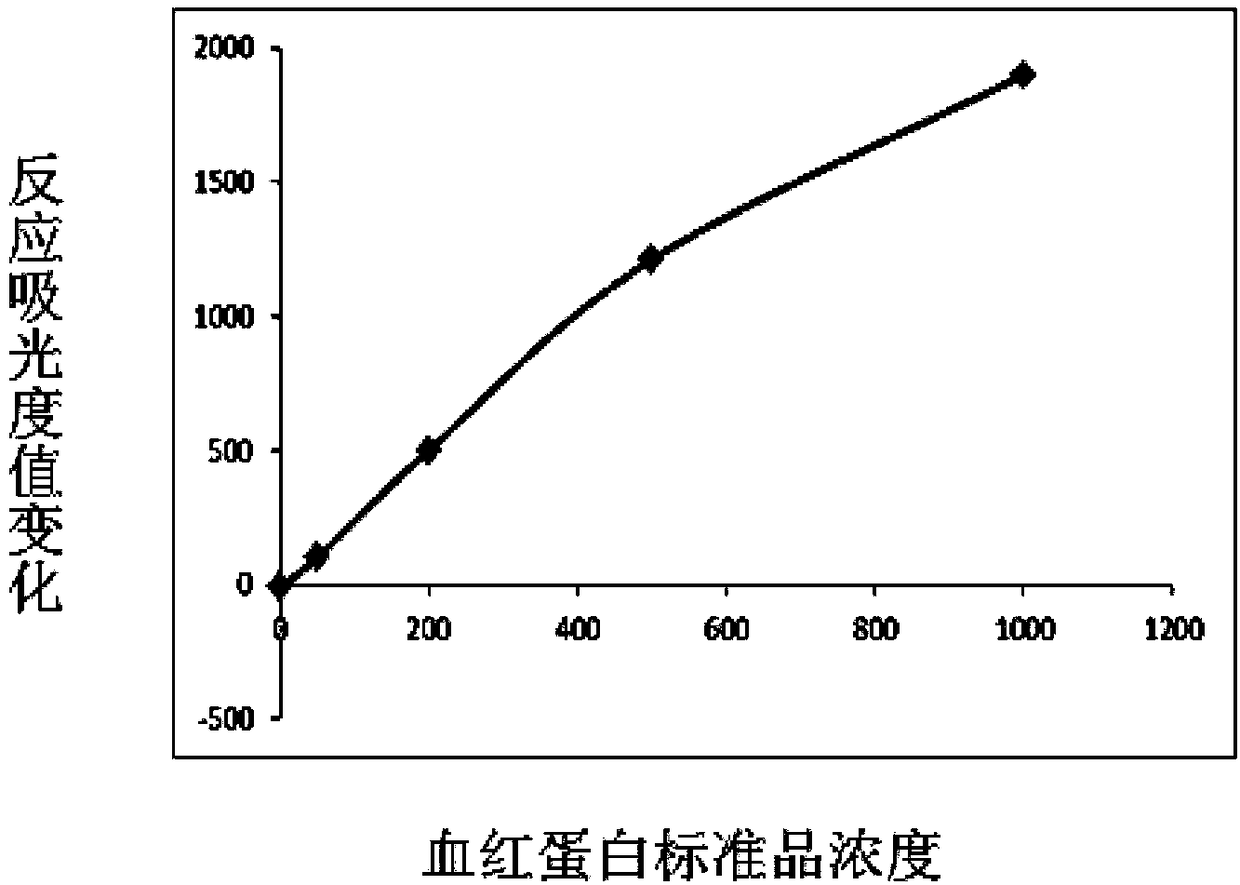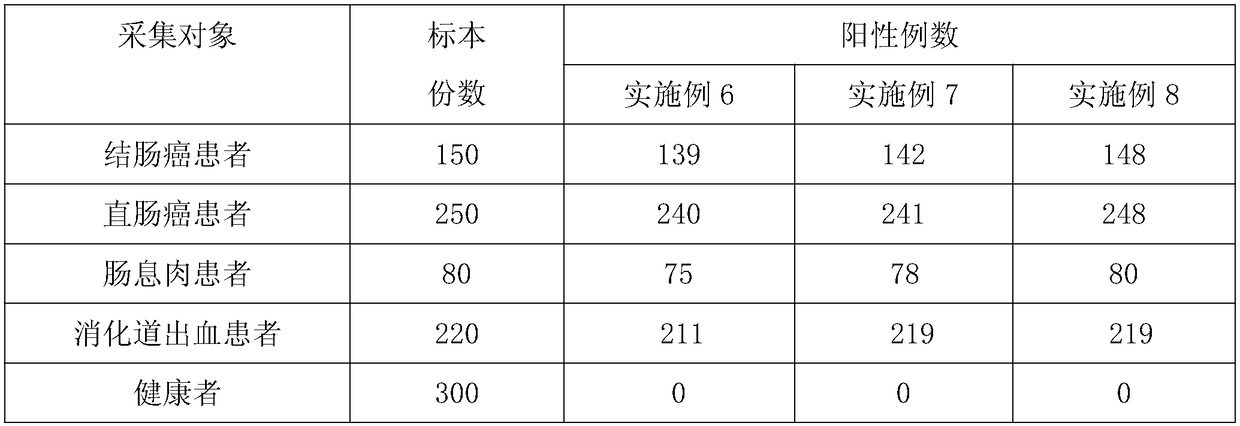Fecal occult blood latex-enhanced immunoturbidimetric kit
A latex-enhanced, immune-turbidimetric technology, applied in the field of clinical in vitro reagent testing, can solve the problems of missed detection, low sensitivity of colloidal gold method, and inability to quantitatively analyze the analyte, and achieves simple and convenient operation, easy automation, and detection stability. and good repeatability
- Summary
- Abstract
- Description
- Claims
- Application Information
AI Technical Summary
Problems solved by technology
Method used
Image
Examples
Embodiment 1
[0028] Preparation of R1 reagent:
[0029] Glycine buffer 0.1M; PEG60002wt%; ProClin-300 0.1wt%; pH=7.4; the balance is water; weigh 7.507g glycine; PEG6000 20g; ProClin-300 1g; add 500ml of water to dissolve and mix; use 3M NaOH aqueous solution Adjust the pH to 7.4±0.1; add water to make the volume to 1L.
Embodiment 2
[0031] R2 reagent is made by the following method:
[0032] (1) Take 100mg polystyrene carboxyl microspheres with a particle size of 60nm (JSR company, carboxyl content 0.187meq / g), wash twice with 50mM MES buffer with pH=5.5, and use 50mM MES buffer with pH=5.5 Dilute the solution to 10ml;
[0033] (2) Add 3 mg of N-hydroxysulfosuccinimide to the 10 ml suspension obtained in step (1), mix well, and add 2 mg of 1-(3-dimethylaminopropyl)-3-ethyl carbon Diimine hydrochloride, react for 30min under dark stirring, 15000rpm, centrifuge for 45min, discard the supernatant;
[0034] (3) Resuspend the centrifugal product obtained in step (2) with 9ml of pH=8.0 boric acid buffer solution, sonicate it with ultrasound for 2 seconds at intervals of 2 seconds until the suspension is uniform, add 0.5mg of rabbit anti-human hemoglobin polyclonal The antibody was reacted for 3h under stirring, 15000rpm, centrifuged for 30min, and the supernatant was discarded.
[0035] (4) Add 10ml of blocking solut...
Embodiment 3
[0039] R2 reagent is made by the following method:
[0040] (1) Take 100mg polystyrene carboxyl microspheres with a particle size of 145nm (JSR company, carboxyl content 0.104meq / g), wash once with 50mM MES buffer with pH=5.5, and use 50mM MES buffer with pH=5.5 Dilute the solution to 10ml;
[0041] (2) Add 1 mg of N-hydroxysulfosuccinimide to the 10 ml suspension obtained in step (1), mix well, and add 2 mg of 1-(3-dimethylaminopropyl)-3-ethyl carbon Diimine hydrochloride, react for 15min under dark stirring, 15000rpm, centrifuge for 20min, discard the supernatant;
[0042] (3) Resuspend the centrifugal product obtained in step (2) with 9ml of pH=8.0 boric acid buffer solution, sonicate for 2 seconds at intervals of 2 seconds until the suspension is uniform, add 3.0mg rabbit anti-human hemoglobin polyclonal The antibody was reacted under stirring for 4h, 15000rpm, centrifuged for 15min, and the supernatant was discarded.
[0043] (4) Add 10ml of blocking solution to the centrifugal...
PUM
| Property | Measurement | Unit |
|---|---|---|
| particle diameter | aaaaa | aaaaa |
| particle diameter | aaaaa | aaaaa |
| particle diameter | aaaaa | aaaaa |
Abstract
Description
Claims
Application Information
 Login to View More
Login to View More - Generate Ideas
- Intellectual Property
- Life Sciences
- Materials
- Tech Scout
- Unparalleled Data Quality
- Higher Quality Content
- 60% Fewer Hallucinations
Browse by: Latest US Patents, China's latest patents, Technical Efficacy Thesaurus, Application Domain, Technology Topic, Popular Technical Reports.
© 2025 PatSnap. All rights reserved.Legal|Privacy policy|Modern Slavery Act Transparency Statement|Sitemap|About US| Contact US: help@patsnap.com



